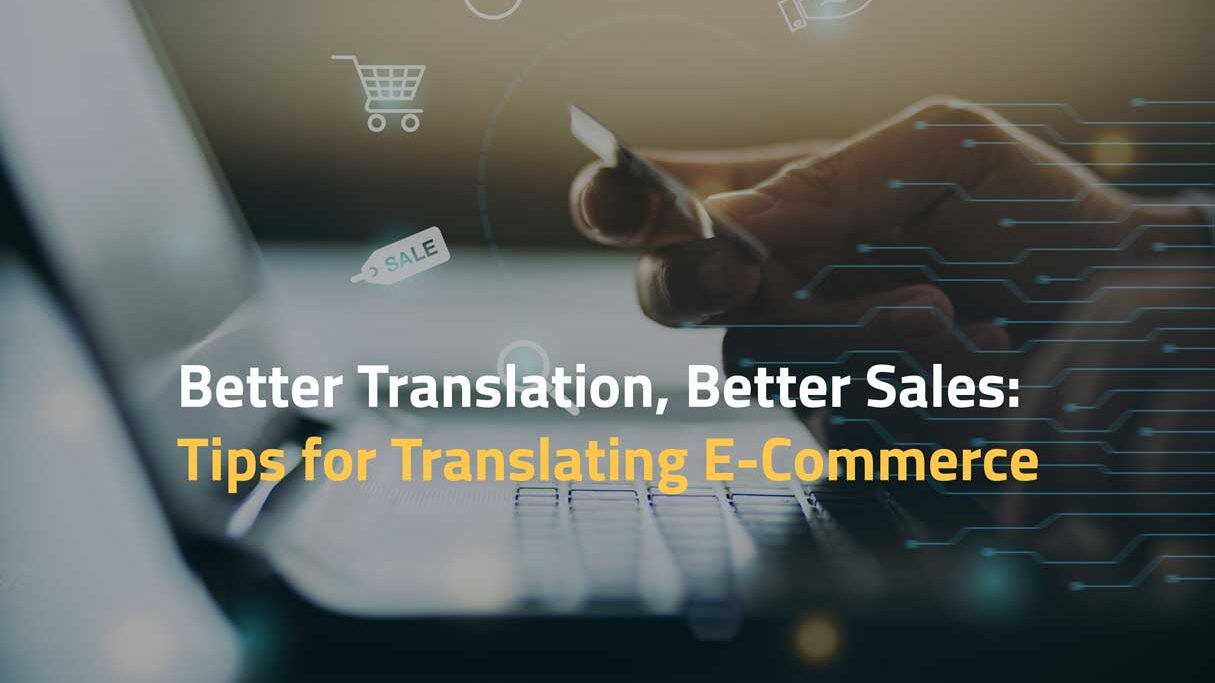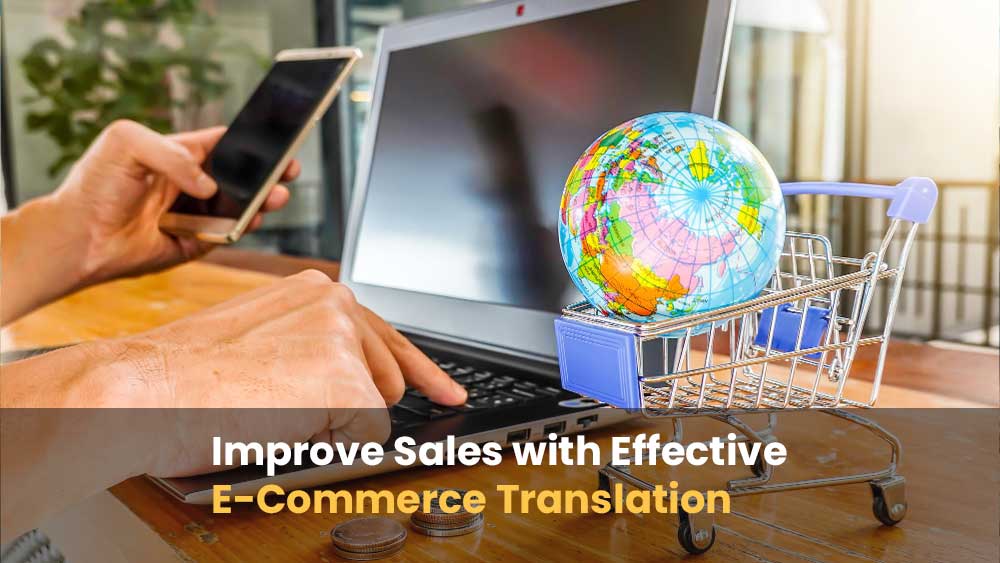Expanding an e-commerce business into new global markets is an exciting prospect, but it comes with major challenges. The most fundamental challenge is translating E-Commerce into different languages to effectively reach and sell to international audiences. E-commerce translation goes far beyond just converting text – it requires localizing the website’s look, feel, and functionality to resonate with foreign cultures. Careful translation is also essential for achieving the right tone and message in product descriptions, on-site content, emails, and more. This process is complex, with many potential pitfalls if not done properly. But with the right approach to translation and localization, e-commerce merchants can tap into lucrative new markets abroad. This article will provide step-by-step guidance on:
- Key principles for successful e-commerce translation
- Selecting the right translation tools and vendors
- Common pitfalls to avoid
- Meeting various linguistic, cultural, and technical challenges
Table of Contents
What is E-Commerce Translation and Why is it Important?

E-commerce translation refers to adapting an online store’s content into different languages to support international customers and new markets. This includes translation of:
E-commerce Translation Essentials:
- Product names, descriptions, attributes, categorization
- Website content: product/category pages, blogs, articles, guides, etc.
- Legal pages: Terms of Service, Privacy Policy, Shipping & Returns, etc.
- Emails: cart abandonment, shipping confirmations, promotional
- Help documentation
- User-generated content: reviews, Q&A, forums
Importance of E-commerce Translation:
- Reach new international customers
- Adhere to local regulations
- Boost SEO rankings
- Strengthen brand perception
- Increase sales conversions
- Improve customer experience
Overview of Key Challenges
Succeeding at e-commerce translation requires much more than running text through Google Translate. Here is an overview of some of the major challenges involved:
- Linguistic nuance – Different dialects, local terminology, idioms, slang, and cultural references must be adapted by native speakers per region.
- Text expansion – Some languages like German and Spanish typically use more words to convey the same message. Content layouts must accommodate.
- Mixed translation types – Product info benefits from human translation, but UGC-like forum posts can use machine translation + post-editing to save costs.
- SEO optimization – Keyword research should inform translations to target searches in each local market, not just literal translation.
- Technical integration – Translation tools must integrate cleanly with e-commerce platforms like Shopify and content managers like WordPress.
- Media localization – Images, videos, and audio containing text or speeches must be adapted with localized transcripts, subtitles, and dubbing.
- Style consistency – A style guide and glossary are key for maintaining branding terminologies and tone across thousands of translated assets.
- Testing localized user experience – Formatting, layout, and functionality need to be vetted
- in each language before launch.
- Managing large volume – Efficient workflows are required for translating thousands of product SKUs and new content additions each month.
- Cost control – An intelligent mix of machine and professional translation must balance quality and speed to control costs.
These are just some of the complex considerations when localizing an e-commerce site. Let’s look at recommendations to address these challenges.
Steps for Translating an E-Commerce Website
When embarking on e-commerce translation, follow these best practices for managing the project successfully:
Think About Localization, Not Just Translation
Localization means adapting a website to be culturally appropriate and relevant vs. direct language translation. Subtle nuances help connect better with each audience:
- Regional dialect – Spanish in Mexico differs from Spain. Target the right localized Spanish.
- Cultural references – Images, examples, and idioms resonate in some regions more than others.
- Prices/Currency – Display costs in local format, language, and currency.
- Colours – Some colour symbolism differs across regions. Test palettes locally.
- Page layout – Right-to-left languages like Arabic require adjusted site layouts.
- Local gateways – Enable preferred local payment types and shipping providers.
- Localization team – Use translators based in-country for the best local knowledge.
Plan Content Sections to Translate
Audit which content needs to be translated and prioritised by importance:
- Products – Titles, descriptions, attributes, categorization, images, videos.
- Category pages – Descriptions, buyer guides, comparison charts.
- Blogs/articles – Educational content to engage visitors.
- Policies – Terms of Use, returns/refunds, privacy, shipping, etc.
- User-generated content – Reviews, forums, comments, Q&A.
- Emails – Cart abandonment, shipping confirmations, promotions.
- Help documentation Also plan expansion in stages. Start with core product content, then tackle descriptions, help docs, and finally community content.
Consider SEO Localization
Ensure translations optimize for local keyword searches:
- Research – Identify keywords per market for core products, categories, and content topics.
- Incorporate keywords – Where possible, translate using researched local keywords, not just literal direct translations.
- Adjust site structure – Use product/content hierarchy and URLs to target local search opportunities.
- Localize metadata – Adapt page titles, descriptions, and alt text for keywords.
- URLs – Use local domains (e.g. .de, .es) or subdomains (.site.com) targeting each region.
Choose Translation Software Carefully
Specialized e-commerce translation software integrates with your platform and content workflow. Key features:
- Easy content export – Batch export product SKUs, bulk content for translation into formats like XLIFF.
- Machine translation – Built-in AI-based auto-translation as a starting point, then human refinement.
- Integrations – Smooth connectivity with e-commerce platforms and content managers.
- Translation memory – Re-use past human translations to reduce costs for repeated content.
- Version control – Track changes and maintain translations as the source is updated.
- Workflow – Reviewer, editor, and approval stages to publish translated content.
- SEO tools – Assist with local keyword targeting.
Avoid Automated Translation Alone
Machine translation continues improving but still cannot provide linguistic nuance without human input:
- Use machine translation as a starting point for human translators – but not the endpoint.
- Automated translations often have errors in grammar, mistranslations, odd phrasing, and missing cultural context.
- Human translators refine the machine output for accuracy, linguistic finesse, and regional adaptation.
- Some UGC-like forums may work with just machine translation. But avoid products, policies, and descriptions.
- Google will often penalize sites that purely rely on automated translation quality. The optimal combination is machine + human translation. This provides efficiency along with quality.
Hire Specialized Translation Agencies
E-commerce translation requires specialized expertise:
- Native translators – Only work with translators located in-country for linguistic/cultural nuance.
- Subject matter experience – E-commerce, retail, and manufacturing provide helpful context versus generic translators.
- Linguistic quality assurance – Proofreaders review for errors, inconsistencies, and awkward phrasing.
- Style guide development – Agencies help craft glossaries of product names, descriptions, and branding terminology in all target languages.
- Tools and integrations – Assess translation software, CMS connectors, and productivity features.
- Volume capabilities – Evaluate bandwidth for large projects and ability to scale with you.
- Cultural expertise – The Agency should provide localization guidance beyond just translation. This linguistic and technical speciality is not a casual undertaking. Investing in qualified partners avoids issues down the road.
Getting the Right Balance of Human and Automated Translation
Consider these best practices for mixing linguistic approaches:
- Use machine translation to initiate draft translations – reduces human effort by up to 40%.
- Assign human translators to then refine the drafts for accuracy and regionality.
- Apply machine translation for user-generated content like reviews and forums which have lower linguistic standards.
- Use translation memory across past human translations for efficiency on repeated product information.
- Perform 100% human QA on machine drafts before publishing to catch gaps.
- When launching new products/content, use 100% human translation to start. Then use a machine to maintain.
- If using fully automated translation, limit to very short descriptive text like product titles – not descriptions. The right blend provides cost-efficiency along with quality. Work with translation partners experienced in tuning this balance.
Conclusion
Done right, e-commerce translation significantly multiplies revenue potential by tapping into expansive new global markets. However poor execution can lead to broken experiences that destroy consumer trust.
Read more
- Best AI Video Translation Tools 2024
- Language Support in Video Games: Enhancing the Gaming Experience
- Difference Between a Language and a Dialect
- Precision in Meaning: Specialized Translation for Industry
- Should You Translate Your Brand Name?
- Can You Learn English with AI?
- Common Localization Mistakes to Avoid for a Hassle-Free Global Launch
- Beginning with Email Translation and Customization: A Guide for Beginners
- Debunking Common Translation Myths
- The Power of Translation Memory: A Guide
- Global Success for an E-Commerce Marketing
- Bridging Barriers to the Kurdish Language
- Introducing the Languages of the World
